| Revista Umělec 2000/3 >> Let’s Go to the Post Office | Lista de todas las ediciones | ||||||||||||
|
|||||||||||||
Let’s Go to the Post OfficeRevista Umělec 2000/301.03.2000 Lenka Lindaurová | Teoría | en cs |
|||||||||||||
|
What happens to art when it is exhibited is clear: it is as if it speaks different languages in different contexts, depending on the space and time of presentation, depending on what it is being confronted with. The context determines whether what we call art is strong, effective or whether, as it is said, it works. What is true for one place and time is not for another.
I’m not sure whether it is due to the atmosphere in contemporary Berlin, where things are steaming like a red-hot European kettle, but somehow art works much better right there and right now than anywhere else. The fourth annual festival of young experimental art …Und Ab Die Post 2000 combined works by artists from Berlin, Budapest and Hong Kong in one squat space in the center of the alternative Mitte scene. Over thirty artists, all around 30 years of age were showing with full professional deployment in a non-gallery space. Having experienced alternative exhibition projects in the Czech Republic, it seemed unbelievable to see technically perfect installations and an exhibition that was followed through with perfection, including catalogues. Nothing was just transferred into the space and left there—thanks to German meticulousness, the viewer was also able to find out something about the works and not only about the financial difficulties. Viewed from outside, the selection of artists appeared to be almost random, but the collective activity radiated he concept. There were also very weak and questionable works (a folklore hut with a garden of yellow plastic gloves by Qui Ping) and 100% effective and sophisticated pieces (kinetically changing objects by Attila Csörgö), in addition to commonplace, average, clever and more or less comprehensible works. Even we, viewers from the periphery, could recognize familiar works: an impressive concept by the Hungarian artists Kriszta Nagy I Am Intersexual Girl which used her own face and an ironic take on gender art; photographs by Antal Lakner, which dealt with capitalist/socialist antagonisms in leisure activities and work. The exhibition also featured Mariann Imre, who showed his embroidered floors. He and Attila Csörgö both represented Hungary at last year’s Venice Bienale. The ”stars” of the project were Peter Land and Hajnal Neméth who made the video In My Garden in which both artists chopped up various symbols of their respective countries, boiled them in a kettle and did a ritual dance around the fire. Art in the era of globalization? Yes, it has been like this since the time of cave murals. The different history and experience of ”ost” and ”west” is perhaps more sensitively perceived in Berlin. (The viewer may not feel it, but the former East Germans and we know all about it.) The international mix offered every possible media from hanging paintings to interactive video and performance recordings. Politics was explicitly inherent in many of the works, such as B&W photographs by Reinhard Kühl, which created the illusion of authentic pictures from World War II, using arranged toys and out-of-focus capture, and flags with signs reading Silence, Exile and Sophistication made by Martin Juef. Barbara Caveng dealt with the issue of collective identity in a clean project of death sentences with photographs of the last meals accompanied by sound recordings of testimonies. A hamburger right before death must be so liberating! Iris Schieferstein also points to collective failures in her installation of hybrid beings composed of different animal parts. Jun Shibata showed I Am Your Sun, a model in the shape of a gigantic hamster with a human face. It is not quite clear why the exhibition’s subtitle said experimental art. True experiments would have included chips containing a visual program that could be inserted under the skin of volunteers, or if art could abolish the opening hours of shops in Germany. Perhaps it is an espionage cipher? It may also be an intellectual call to create in the style of the post-millenium or an appeal for e-mail communication. A colleague living in Berlin interpreted the exhibition’s title as Let’s Go to the Post Office. One cannot avoid comparing the exhibition to similar events in the Czech Republic, being also in the ”East.” It is evident that we are worse off financially and sponsorship here is not working very well. The worst thing, however, is professionalism and consistency. That is why this kind of exhibition in Berlin is an exceptional event for us, and through our relation to choice, we discover our own complexes. …Und Ab Die Post 2000. 4. Festival junger experimenteller Kunst. Postfuhramt, Oranienburger Strasse, May 12-June12, 2000.
01.03.2000
Artículos recomendados
|
|||||||||||||
|
04.02.2020 10:17
Letošní 50. ročník Art Basel přilákal celkem 93 000 návštěvníků a sběratelů z 80 zemí světa. 290 prémiových galerií představilo umělecká díla od počátku 20. století až po současnost. Hlavní sektor přehlídky, tradičně v prvním patře výstavního prostoru, představil 232 předních galerií z celého světa nabízející umění nejvyšší kvality. Veletrh ukázal vzestupný trend prodeje prostřednictvím galerií jak soukromým sbírkám, tak i institucím. Kromě hlavního veletrhu stály za návštěvu i ty přidružené: Volta, Liste a Photo Basel, k tomu doprovodné programy a výstavy v místních institucích, které kvalitou daleko přesahují hranice města tj. Kunsthalle Basel, Kunstmuseum, Tinguely muzeum nebo Fondation Beyeler.
|







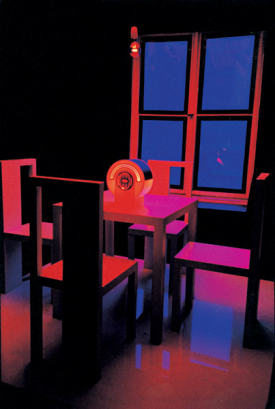















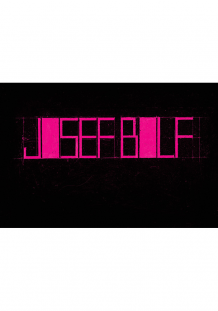




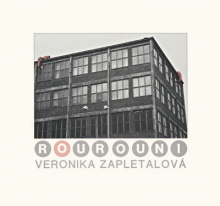
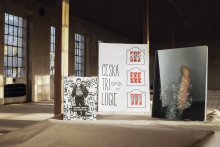

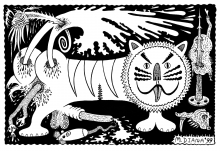


 New book by I.M.Jirous in English at our online bookshop.
New book by I.M.Jirous in English at our online bookshop.
Comentarios
Actualmente no hay comentariosAgregar nuevo comentario